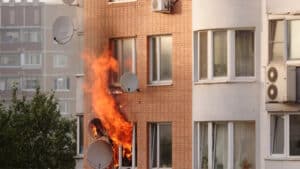Return of a tenant’s security deposit is covered by Civil Code section 1950.5. The security deposit is the property of the tenant, and sums can only be withheld for items described under 1950.5. These items include: 1) to remedy a tenant’s unpaid rent, 2) to repair damage, 3) to clean the unit, and 4) to restore, replace or return personal property. The deposit cannot be used to repair damages for “ordinary wear and tear” that occurred during the tenant’s term, or to repair any damage that pre-existed the tenancy.At the outset of the tenancy there is no statutory requirement for the landlord to conduct a pre-lease or move-in inspection for damage and deterioration to the unit. Therefore, it is incumbent on tenants to protect themselves with an eye toward the end of the tenancy. Prior to moving in, the tenant should request a joint walk-through of the unit. The condition of fixtures, appliances, walls and carpet should be inspected with noticeable defects and damage itemized in writing. The tenant should take photographs of the condition of the unit and any damage. If the landlord agrees to remedy or repair apparent defects, the tenant should also document this in writing. An email to the landlord documenting the findings of the move-in inspection is sufficient. If the landlord fails to attend a joint walk-through, the tenant should conduct their own inspection and document damage.Once the landlord or tenant has given notice to terminate the tenancy, the landlord is required to give the tenant written notice of the tenant’s right to request an “initial” inspection of the unit for damage.The tenant must then request the initial inspection. After the initial inspection, the landlord must give the tenant an itemized statement specifying the necessary repairs and cleaning and the basis for any proposed deductions from the security deposit. The tenant then has the opportunity to remedy the identified deficiencies “in a manner consistent with the rights and obligations of the parties under the rental agreement” to avoid deductions from the deposit. The landlord may use the deposit only for items in the initial inspection statement that were not cured by the tenant. Of course, the landlord can make deductions for any damage that occurs after the initial inspection and before the end of the tenancy.
With or without the initial inspection, the landlord must provide an itemized statement and a refund check for the remainder of the deposit no later than twenty-one days after tenant’s vacates. The statement must indicate the basis for any amounts deducted from security deposit. If the landlord fails to provide these two items within twenty-one days, the landlord forfeits the right to retain any portion of the deposit. The landlord must return the entire deposit to the tenant and attempt recovery for damage in a subsequent judicial proceeding. If the landlord retains the deposit in “bad faith,” the landlord may be subject to statutory damages of up to twice the amount, in addition to any actual damages the tenant has suffered.











